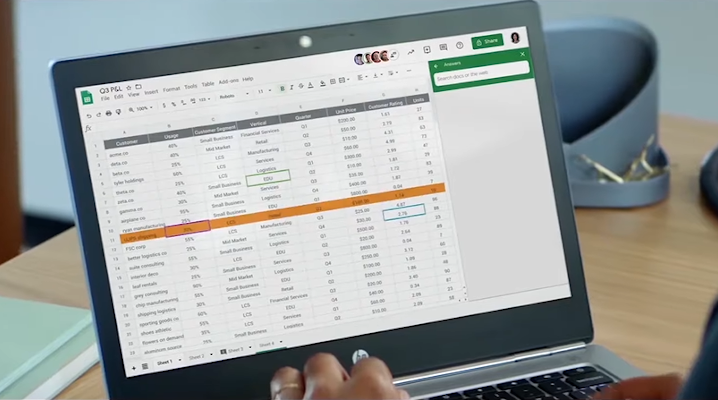 AI
AI
 AI
AI
 AI
AI
Google LLC has released the code for Tapas, an internally developed artificial intelligence that can take a natural language question such as “What’s the name of the latest iPhone?” and fetch the answer from a relational database or spreadsheet.
The search giant’s researchers detailed the AI on Thursday. Tapas is based on BERT, a natural-language processing technique Google uses in its search engine.
A sizable portion of the world’s information is relational, that is to say organized into rows and columns. Navigating from these rows and columns historically required either manually sifting through a spreadsheet or writing SQL queries. Natural-language processing makes the task considerably easier for users, which is why the technology has been extensively adopted by Google and other players in the analytics market.
The search giant says that Tapas beats or matches the three top open-source algorithms for parsing relational data. Google trained the AI on 6.2 million tables from the English version of Wikipedia and then set it to work on a trio of academic datasets. A benchmark test showed that the neural network provides accurate or comparable answers than the rival algorithms across all three datasets.

Under the hood, Tapas employs a variation of the BERT natural-language processing technique used in Google Search. BERT provides higher accuracy than traditional approaches because it allows an AI to evaluate a text sequence not only from left to right or right to left as is the usual practice, but do both at the same time. The version Google has implemented for Tapas allows the AI to consider not only the question posed by users and the data they wish to query, but also the structure of the relational tables in which the data is stored.
The increased accuracy is just one of the advantages Google touts. “Instead of creating a model that works only for a single style of table, this approach results in a model that can be applied to tables from a wide range of domains,” Thomas Müller, a software engineer at Google Research who worked on Tapas, detailed in a blog post.
Furthermore, Tapas can go beyond just fetching data and also perform basic calculations. For example, if a business user evaluating sales data asks for the average revenue across their company’s three most popular products, the AI could calculate the answer.
Tapas could potentially find use in some of Google’s products. The search giant might, for example, use the model to enhance its Sheets spreadsheet editor, which already provides limited natural-language query options via its Explore feature. Tapas’ ability to extract specific items from large data repositories might also lend itself to improving Google Assistant’s question-answering capabilities.
Support our mission to keep content open and free by engaging with theCUBE community. Join theCUBE’s Alumni Trust Network, where technology leaders connect, share intelligence and create opportunities.
Founded by tech visionaries John Furrier and Dave Vellante, SiliconANGLE Media has built a dynamic ecosystem of industry-leading digital media brands that reach 15+ million elite tech professionals. Our new proprietary theCUBE AI Video Cloud is breaking ground in audience interaction, leveraging theCUBEai.com neural network to help technology companies make data-driven decisions and stay at the forefront of industry conversations.